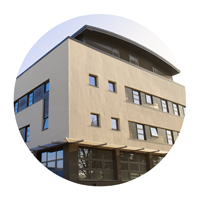All NHS trusts are required to submit a final declaration to the Care Quality Commission (previously the Healthcare Commission). The declaration is a statement of each trust’s level of compliance with the core standards from April 1st 2008 to March 31st 2009.
20100426-RR1-Core-Standards-Update-Form
Corroborating-Statement-Quality-Account-2010-2011
[wpspoiler name=”CQC report into dignity and nutrition for older people at GHH” style=”wpui-blue”]
More of the Care Quality Commission’s (CQC) reports into dignity and nutrition for older people are being published next week (week commencing 13th June) and this includes the CQCs review of Good Hope Hospital.
A summary of the CQC’s findings for Good Hope Hospital:
| What we (the CQC) found overall We found that the Good Hope Hospital was meeting both of the essential standards of quality and safety we reviewed, but to maintain this; we suggested that some improvements were made. |
The inspection teams were led by CQC inspectors joined by a practising, experienced nurse. The inspection team also included an ‘expert by experience’ – a person who has experience of using services (either first hand or as a carer) and who can provide the patient perspective. The CQC has reviewed all the information held about this provider, carried out a visit on 11 April 2011 to wards nine and ten.
They observed how people were being cared for, talked with 13 people who use services, five staff and one relative and looked at records of people who use services.
What people said …
People the CQC spoke to were mostly positive about their experiences of care and treatment on both wards. They said that they were treated with respect.
On one ward they received some comments that indicated that not everyone was being respected and their dignity maintained.
One person said: “Staff were busy, reasonably polite but on one occasion they were not very nice. They didn’t always talk quietly and this made her feel cross and feel like shouting back.”
Another person said that they were satisfied in the main but were concerned about the length of time they had to wait before being taken to the toilet. They had spoken with staff and it had improved since.
Most people said that they were happy with the food they received. The food was not too bad and they got enough to eat. They told the CQC that there were choices of hot and cold food on the menu. Some people said that they hadn’t been asked what their likes or dislikes were but had been asked about allergies and if they were vegetarian.
One person said “Sometimes the food was not that warm as the trolley started (to serve food) at the other end of the ward but the food was still enjoyable.”
Another person said “They always tell me to eat meals, and if I want something else they give me a sandwich. Never been a big eater but we have three meals a day and supper with a drink.”
A relative said that they came twice a day to feed their father and the food was “excellent” and they couldn’t fault the staff.
Outcome 1: People should be treated with respect, involved in discussions about their care and treatment and able to influence how the service is run
Overall, we (the CQC) found that Good Hope Hospital was meeting this essential standard but, to maintain this, we suggested that some improvements were made.
Outcome 5: Food and drink should meet people’s individual dietary needs
Overall, we (the CQC) found that Good Hope Hospital was meeting this essential standard but, to maintain this, we suggested that some improvements were made.
The CQC has reached one of the following judgements for each essential standard:
Compliant means that people who use services are experiencing the outcomes relating to the essential standard.
A minor concern means that people who use services are safe but are not always experiencing the outcomes relating to this essential standard.
A moderate concern means that people who use services are safe but are not always experiencing the outcomes relating to this essential standard and there is an impact on their health and wellbeing because of this.
A major concern means that people who use services are not experiencing the outcomes relating to this essential standard and are not protected from unsafe or inappropriate care, treatment and support.
Outcome 1: Respecting and involving people who use services
What the outcome says
This is what people who use services should expect.
People who use services:
Understand the care, treatment and support choices available to them.
Can express their views, so far as they are able to do so, and are involved in making decisions about their care, treatment and support.
Have their privacy, dignity and independence respected.
Have their views and experiences taken into account in the way the service is provided and delivered.
What we (CQC) found
|
Outcome 5: Meeting nutritional needs
What the outcome says
This is what people who use services should expect.
People who use services:
Are supported to have adequate nutrition and hydration.
What we (CQC) found
|
[/wpspoiler]
Visit the Care Quality Commission Website.






